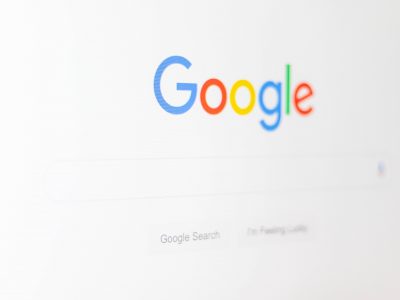To know what’s happening in any subject, you need to know a bit of the jargon. Are you thinking of outsourcing your SEO, or even learning how to do it yourself? Then have a scan through these SEO terms and make sure you can talk the talk so you can walk the walk.
If you’ve worked with social media at all, you might see some familiar terms here. Social media and SEO share a lot of the same language as they’re both about creating and maintaining an engaged audience for your business online.
What is SEO all about?
Search Engine Optimisation (SEO) is all about improving aspects of your website to attract more organic web traffic.
SEO is information retrieval by a search engine.
At a minimum, you need to provide good information and make it easy to access.
SEO is about drawing an audience to your business through free, organic, natural methods. It is not about paying for advertising or marketing, which is Search Engine Marketing (SEM).
We encourage business owners to learn about SEO before they pay for either SEO or SEM services.
In this quick post, we want to highlight some of the terms you may have heard and wondered what they mean. We’re concentrating on SEO for this one, and will cover other aspects of digital marketing down the road…
The three major ways to improve your website SEO
We often break Search Engine Optimisation into three SEO pillars, being On-Page, Off-Page and Technical SEO.
Each of these pillars has a main core focus:
- Create relevant, interesting and well-written content. This helps increase user engagement, which helps your SEO and your customers. We call this On-Page SEO.
- Encourage other people to link to your content to help spread the word. This is known as Off-Page SEO. Search engines see that other people think your content is worth sharing. This shows trust and is an excellent way to improve your search engine rankings.
- Optimise the technical side of your website so that search engines can crawl your site and index your content easily. This is known as Technical SEO and looks at things like the speed of your website, security, mobile-friendliness and heaps more.
So here are a few terms you may hear being bandied about. Let’s find out what they actually mean…
10 SEO terms you didn’t realise you needed to know about!
Organic Traffic

Now let’s get something clear right from the start. Organic in this sense does not mean that your content is free of pesticides or can wander about a green paddock.
In the world of SEO, organic means ‘free’ or ‘real’ traffic, coming from Google, Yahoo, Facebook, YouTube or any other source.
Articles/editorial, memes, and videos that go viral through online community sharing (as opposed to paid advertising or paid search engine marketing) are considered organic.
Search engine algorithm

All search engines (Google, DuckDuckGo, Bing, Yahoo etc) have different algorithms. These algorithms have different ways to measure the value of your website against certain search terms and other factors.
Some of these ‘ranking factors’ include content quality, site speed, backlink quality, code structure and site security.
No one is quite sure how often Google updates its algorithm, but reliable reports put it at anywhere between 300 – 1000 times per year.
Backlink

An incoming link from another website to your website is called a backlink.
Backlinks help search engines trust your website and are a huge part of the Off-Page SEO stuff we mentioned previously.
Not all backlinks are created equally though. A backlink from a highly respected website is of far greater value than a link from a website with a poor reputation.
Backlinks form a huge part of your Off-Page SEO.
Bounce rate

Bounce rate is the percentage of your visitors who enter your site and then leave without viewing any other pages.
Bounce rate is often perceived to be bad but isn’t always guilty as charged.
If your home page has a high bounce rate, then you should really look at that. If you have a lot of articles on your site, or you promote a lot of events of high price items, then a higher-than-normal bounce rate can be expected.
Contact pages usually have a high bounce rate too. Someone might search for your business on Google with the term “contact [your business name]” or “[your business name] phone number”. Once the search engine has sent them to your contact page and they can now call you, they’ll close the page. And that’s a bounce.
Have a read of our pretty fabulous article if you want to know more about bounce rate.
Long tail

Long tail refers to longer and more specific search queries. Long tail queries are often less targeted than shorter broad queries.
“HTML” is pretty broad and difficult to target. We call that sort of query a fat head search. What about HTML? Is the user wondering how to write HTML? Are they wondering what HTML stands for? Who knows? Fat head keywords are not worth your time, money or energy.
“Learn HTML” is a little more specific. This is the chunky middle of keyword town.
“Learn to build HTML websites in Melbourne” is more specific and far more likely to give a great result to the user. This is the long tail.
Most searches are long tail.
70% of search results come from long tail keywords, being HIGHLY SPECIFIC 4-6 word phrases.
We talk more about the long tail in our On-Page SEO resource.
Crawler / Bot

Again, let’s not take this too literally.
There are no tiny creepie-crawlies scurrying through the internet lines.
A web crawler is a program used by search engines to collect data from the internet. When a crawler visits a website, it picks over the website content and stores it in an ‘index’.
The crawler follows links from the website, to find other websites and pages to add to its index.
Engagement

Engagement is a metric to measure how people are interacting with your content.
To measure engagement, we look at things like how long someone is on a particular page of your website, and if they complete any desired action, like clicking to another article or buying from you.
We can measure engagement on social media by looking at how people are liking, sharing, commenting, and interacting with your content.
To do this, we can check out stats and analytics as well as engage in more comprehensive user research.
If we’re at a party and everyone’s talking to you and about you, then you have high engagement.
If you’re standing alone in the corner staring wistfully into the crowd, then you have low engagement.
Impressions

Impressions are not about how many weird faces you can pull before the wind changes.
In digital marketing, impressions are the number of times a piece of content (ad, video, article etc) is requested from the source.
Specifically for SEO, you can see in Google Search Console what terms you are ranking for in a Google search, and how many impressions that term is getting vs how many clicks that term is getting.
Indexed pages

The pages on a site which have been added to a search engine index are called indexed pages.
A page cannot be shown on a search engine result page (SERP) unless it has been indexed. Without indexing, the search engine would not know the page exists.
Without indexing, your business isn’t going to even come close to being in a search result or found by your customers.
SERP

SERP is just an acronym for Search Engine Results Page. It comes up a lot in SEO articles but barely anyone deems it worth their time to tell you what it actually means.
A Search Engine Results Page is the page that you see after searching for something in Google, Bing, DuckDuckGo, Yahoo or some other search engine.
Depending on the search term and the search engine, the SERP you see can contain organic results, ads, instant answers, reviews and more.
And that’s a wrap
So there you have it, folks. A few SEO terms that should now make a bit more sense.
Feel free to get in touch if there are any other jargon busters you’d like us to undertake, or if you’d like us to run an SEO and User Experience audit of your website.
